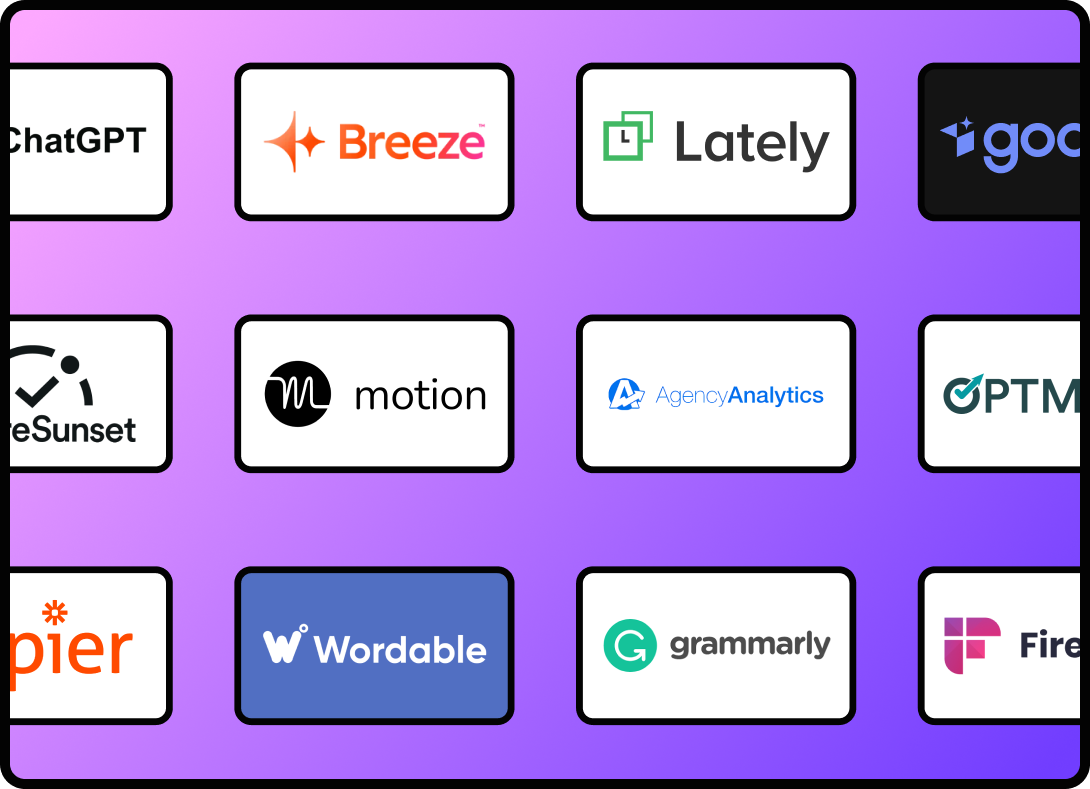Marketing analytics isn’t what it used to be. I remember when diving into campaign data meant manually pulling reports, squinting at spreadsheets, and spending hours trying to spot trends. Today, things are different. Artificial Intelligence has ushered in a new era for marketing analytics, turning what once felt like guesswork into a more precise science. In fact, 94% of organizations now use AI to help prepare or execute their marketing strategies. This isn’t just hype, it’s a reflection of how critical AI has become in handling the massive data marketers deal with daily.
AI in marketing analytics allows us to analyze more data, more quickly, and often more accurately than we ever could alone. But numbers and ease aside, what does that really mean for marketers like us? Let’s explore how AI is changing the game, from predictive analytics to sentiment analysis, and answer some of your burning questions along the way.
How Is AI Used in Marketing Analytics?
AI is not a magic wand, but I have to admit it—it’s pretty close. AI in marketing analytics is used to enhance how we collect, analyze, and act on data, enabling smarter decision-making at every step. It is essentially our speedy data analyst, tirelessly processing information to help us understand our audience and campaigns better. Here are some of the core ways AI is being used right now:
- Data Crunching at Scale: AI algorithms (especially machine learning) can sift through vast datasets from multiple channels—web, social, email—you name it. It is much faster than any human. This means you get insights in moments, not weeks. AI looks for patterns and correlations in customer behavior that would be easy for us to miss.
- Predictive Modeling: One of the key benefits of using AI for predictive analytics in marketing is that it can forecast trends and customer actions with impressive accuracy. By learning from historical data, AI models predict things like which leads are most likely to convert, when customers might churn, or what products a segment will want next.
- Customer Segmentation & Personalization: AI helps break down your audience into meaningful segments far beyond basic demographics. It finds patterns in behavior and preferences, so you can tailor campaigns to very specific groups (or even individuals). Machine learning-driven segmentation can reveal, for example, a group of customers who are likely to make repeat purchases, or ones at risk of leaving, so you can influence them with the right message.
- Real-Time Campaign Optimization: Remember the days of running an ad and waiting until after the campaign to see if it worked? AI changes that. AI-powered analytics tools monitor campaign performance live and can adjust elements on the fly to improve results. For instance, if a certain ad creative or email subject line isn’t performing, an AI system might detect that and suggest (or even implement) an adjustment mid-campaign to boost your ROI.
- Natural Language Processing & Sentiment Analysis: Not all marketing data is numerical. Think of all the tweets, reviews, and customer support chats full of insights. AI can analyze this unstructured data using NLP to gauge sentiment and extract themes. In practice, that means an AI could scan thousands of social media mentions and tell you if the buzz around your brand is positive or negative, and why. It’s like having a finger on the pulse of customer opinion at scale. As one example, T-Mobile used AI-driven sentiment analysis to identify customer pain points and was able to reduce complaints by 73% by quickly addressing those issues—a powerful testament to how understanding sentiment can directly improve customer experience.
Those are just a few examples, but they highlight a pattern: AI is embedded throughout the marketing analytics process, from data collection all the way to delivering insights and recommendations. It automates the tedious tasks, surfaces deeper insights, and even communicates findings in plain language.

AI-Driven Marketing Analytics in Action: Key Applications
To truly appreciate how AI is changing marketing analytics, let’s zoom in on a few key applications. These are scenarios that feel almost futuristic, yet they’re happening now in forward thinking marketing teams:
1. Predictive Analytics for Smarter Decisions
Imagine knowing which customers are going to buy—before they even do. AI makes this possible with predictive analytics models that analyze historical customer data and behaviors to forecast future outcomes. For example, AI can score leads by their likelihood to convert, predict customer LTV (Lifetime Value), or forecast next quarter’s sales trends with a high degree of confidence.
The benefit here is obvious: better foresight means better planning. If an AI model predicts that a certain customer segment is likely to churn, marketers can proactively launch a re-engagement campaign to win them back. Or, if the model projects a surge in demand for a product, the team can increase inventory and marketing spend for that item.
This isn’t just theory—many companies are seeing the impact of AI in predictive analytics already. For instance, Netflix famously uses predictive algorithms to recommend content—these same principles are used by marketers to recommend the right products to the right people at the right time. The key difference AI brings is speed and scale: it can analyze millions of data points (purchases, clicks, views) and continuously update predictions as new data comes in.
Why It Matters
With predictive analytics tools, decisions can be data-backed and forward-looking. Campaigns become less of a shot in the dark and more like guided arrows hitting targets. As per McKinsey, the use of AI-powered forecasting will often result in a reduction in errors, estimated to be in the range of 30% to 50%.
As a marketer, having AI’s predictive insights in your toolkit means you can allocate budget and effort where they’re likely to make the most impact, leading to higher ROI and less wasted spend.

2. Customer Segmentation & Personalization at Scale
In the past, marketers might have segmented customers by a few broad categories—say by age range or location. With machine learning in particular, AI can analyze countless customer attributes and behaviors to create micro segments that are far more precise. For example, an eCommerce AI might find a segment of customers who only buy during holiday sales, or another segment that responds strongly to eco-friendly messaging. These nuanced segments let you tailor marketing strategies in a highly personalized way.
Once segments are identified, AI can also help deliver personalized experiences to each one. Ever notice how your Netflix homepage or your Amazon recommendations feel eerily spot-on? That’s AI-driven personalization in action. In marketing analytics, AI looks at individual customer data, almost like browsing history, past purchases, or even sentiment from their reviews. This helps decide what message or offer to put in front of them.
Maybe Customer A gets a discount on a product they’ve been eyeing, while Customer B sees a how-to guide because they just bought a complex gadget. This level of personalization has been shown to boost engagement and conversion rates, because you’re speaking directly to what each customer cares about.
People feel understood when brands deliver relevant content, rather than one-size-fits-all blasts. And happy, understood customers are more likely to become repeat customers—and evenloyal advocates.
3. NLP & Sentiment Analysis: Hearing the Customer’s Voice
Marketing isn’t just about numbers—it’s about the people. And people express themselves with language. Every tweet complaining about a service, every review praising a product, every customer support email. All of these combinations form a plethora of actionable insights if we can tap into them. AI, through Natural Language Processing, is how we can tap in.
NLP-powered sentiment analysis allows us to quantify and understand customer opinions at scale. Suppose you launch a new product and thousands of comments pour in across social media, forums, and surveys. It would be rather difficult and time-consuming to read and categorize them all. AI steps in here to scan text and determine if the sentiment is positive, negative, or neutral. It can even identify the specific topics or features people mention most.
For example, an AI tool might analyze all tweets about your brand’s latest ad campaign and report that 70% of the conversation is positive, often mentioning “funny ad” and “love the music,” while the 30% negative mentions cite “too long” or “didn’t get it.” That’s actionable insight: double down on the humor and consider shorter versions of the ad. AI does this by understanding language (to a degree) and learning from vast amounts of text data, which helps it catch nuances like sarcasm or context better than earlier manual methods.
We already saw how sentiment analysis helped T-Mobile drastically cut complaints by flagging issues early. It’s also used for reputation management and competitive analysis. The real power here is in timeliness.
5. AI-Driven Tools & “Co-Pilots”
Today’s martech landscape is brimming with AI-driven analytics tools. Some are built into platforms you might already use, and others are standalone solutions designed specifically to be your “AI brain” for marketing. A few examples:
- Business Intelligence (BI) Platforms With AI: Tools like Microsoft’s Power BI and Salesforce’s Tableau now have AI features that can automatically find insights in your data or even generate visualizations. Microsoft’s AI, for instance, can use machine learning to help identify factors influencing a metric on a dashboard (through features like the decomposition tree).
- AI-Powered Marketing Analytics Suites: Platforms such as ThoughtSpot or Improvado are built to let you query data using natural language and get instant results. These act like an AI assistant sitting on top of your data warehouse, helping find the needle in the haystack. They often come with pre-built models for things like anomaly detection (flagging when something’s off-trend) or attribution (figuring out which marketing touchpoints deserve credit for a sale).
- Customer Relationship Management (CRM) & Ad Platforms: Salesforce’s Einstein, for example, plugs AI into CRM, doing things like scoring leads and suggesting optimal times to contact a prospect. Google and Meta’s ad platforms also use AI under the hood. If you’ve used automated bidding or campaign optimizations, you’re using AI for marketing analysis without even realizing it.
- Generative AI Assistants: These have recently emerged as well. Think of using ChatGPT or similar large language models as an analyst. You can feed them data or ask for research. While they’re not connected directly to your databases (unless you use special plugins), marketers use them to summarize industry research, draft reports, or even brainstorm insights from public data. They represent a new type of AI tool that’s more conversational and creative.
There’s a rich ecosystem of AI-powered tools tailored for different analysis needs—the key is choosing the right ones for your organization’s stack and goals. Some teams might need an AI to help with social media analytics, while others need one embedded in their web analytics or email marketing platform. The good news is these tools are getting more user-friendly and powerful by the day.

The Human Touch: Why Marketers Aren’t Obsolete
With all this talk of AI, it’s natural to wonder, “where do humans fit in this analytics future”? Let me assure you, our role becomes even more important. AI is incredible at processing data and even at optimizing within established parameters, but there are things it can’t do that humans excel at:
- Strategic Thinking & Context: AI can tell you what’s happening, but deciding what to do about it in a broad business context is still very much a human strength. We understand nuances like brand voice, long term positioning, and external factors (e.g., cultural moments, economic climate) that an algorithm won’t necessarily be aware of.
- Creativity & Content Creation: AI can assist in generating content and it’s getting better at it every day. But genuine creativity, the kind that launches a viral campaign or builds an emotional connection with an audience, often springs from human insight and imagination. In marketing, the best outcomes usually come from AI and humans collaborating. For example, an AI might analyze which messages resonate with which audiences, and a savvy marketer uses that to craft a brilliant new campaign concept.
- Ethics & Trust: AI doesn’t have morals or empathy. It may make recommendations that are good for short-term metrics but could backfire reputationally or ethically. We’ve seen instances of AI algorithms unintentionally reinforcing bias or pushing boundaries (like targeting vulnerable audiences in questionable ways). It’s on us as marketers to apply an ethical lens to AI-driven insights and ensure we use them responsibly. Human oversight is crucial to prevent “just because we can, doesn’t mean we should” scenarios in analytics and targeting.
- Interpretation of the “Why”: AI will tell you the “what”—“this campaign’s engagement dropped 20%”. But figuring out the “why” often requires human intuition, further investigation, and cross-functional discussions. Maybe a competitor launched a campaign that stole the thunder, or maybe there was an unrelated news event that week. A human analyst will dig in and connect those dots. The AI likely won’t unless you explicitly program that context in.
So instead of thinking of AI as a threat to your (and my) livelihood, think of it as the ultimate assistant. It handles the heavy analytical lifting, giving us more bandwidth to be creative, strategic, and customer centric. In the end, marketing is about understanding people. While AI provides unprecedented insight, it’s our job to turn that insight into action that truly resonates with fellow humans.
The Future of Marketing Analytics With AI
So, what’s next? Given how far we’ve come in just the last few years, it’s exciting to think about the future of AI in marketing analytics. Here are a few trends and predictions on my radar:
- Even More Real-Time & Predictive Everything: The lag between data and action will continue shrinking. We’re heading toward a world of continuous intelligence, where AI tools constantly monitor all your marketing data streams and not only alert you to issues or opportunities instantly, but possibly even act on them automatically. Real time personalization on websites and apps will get even more sophisticated, maybe even predicting what a user wants before they click.
- Natural Language Interfaces Become Standard: Those “chat with your data” scenarios will become commonplace. In the future, it won’t just be data analysts using AI to query data—every marketer might interact with data through voice or chat. Asking your marketing dashboard “Hey, how’s our brand sentiment this week compared to last week?” could be as simple as asking your smart speaker for the weather. This trend will make analytics accessible to non analysts, easily digesting data across teams.
- Integration of Generative AI in Analytics: Generative AI (like GPT-4, DALL-E, etc.) is mostly known for creating content: text, images, and video. But, it will likely intertwine with analytics more. For example, an AI might automatically generate a narrative report or a slide deck of your monthly performance. It’ll be able to include not just text, but charts and even voiceover commentary. Generative AI might also help create synthetic test data to better train predictive models when real data is scarce.
- Greater Focus on Data Privacy & Ethics: As AI gets more embedded in marketing, expect increased scrutiny on how data is used. Future AI analytics tools will need to build in privacy by design, ensuring compliance with regulations and ethical standards. Marketers will have to be even more transparent about data usage. AI might even help here by automatically anonymizing data or detecting bias in how we target audiences.
- AI in Visual & Voice Analytics: AI is already being used to analyze images. This will grow, giving us analytics on visual content and voice interactions. For example, a future AI might tell you, “80% of videos users share with our hashtag prominently feature our new product good brand exposure,” or analyze customer service call recordings for sentiment and key themes.
- Collaboration of AI Systems: We might get to a point where different AI systems work together more seamlessly. The analytics AI might automatically inform the ad AI to adjust spend, which then tells the personalization AI to change the website content, forming a sort of autonomous marketing loop. Many routine optimizations could become self driving.
To sum it all up, AI has become—and will continue to be—a vital part of marketing analytics as a way to analyze bulky or difficult to parse data, perform routine optimizations, provide marketers with creative and user behavior insights, and much more. Don’t reject it—embrace it. It might just make your job easier (but it won’t take it, I promise).
AI in Marketing Analytics FAQ
How is AI used in marketing analytics?
AI is used in marketing analytics to collect and analyze large volumes of data far more efficiently than a human team could. It identifies patterns in customer behavior, segments audiences, predicts outcomes, and measures campaign performance in real time. AI also powers tools that automatically interpret text via NLP to gauge sentiment and customer feedback.
Is there an AI for market analysis?
There are numerous AI-driven platforms and tools designed for market analysis and marketing analytics. These range from analytics specific AI tools to AI features in broader marketing software. Even general AI services like ChatGPT can assist in market research or analysis when used properly. The key is choosing an AI solution that fits your specific needs. Whether it’s analyzing consumer trends, optimizing advertising, or improving customer segmentation.
How is AI used in marketing (beyond analytics)?
Outside of pure analytics, AI is transforming many marketing activities. It’s used in content creation. For example, AI writing assistants that generate blog drafts or social media captions, and AI image generators for creative assets. It powers chatbots and virtual assistants that handle customer inquiries 24/7, improving customer service. AI is behind personalized product recommendations on e-commerce sites and personalized email targeting. It’s also used in programmatic advertising, automatically buying and adjusting ads targeting the right audiences at the right times. In essence, if there’s a repetitive or data driven task in marketing, chances are AI can play a role in executing or enhancing it.
How is AI used in analytics (in general)?
AI in analytics is not just marketing but across domains. It is about using machine learning and advanced algorithms to uncover insights in data that traditional methods might miss. In finance, AI analyzes stock trends and fraud patterns. In healthcare, it finds correlations in patient data to aid diagnosis. In operations, it optimizes supply chain logistics. Common threads include predictive analytics, anomaly detection, and natural language analysis. Across the board, AI extends analytics by handling huge data sets and complex analyses quickly. It doesn’t replace the need for human analysts, but it enhances their capabilities with faster processing and deeper pattern recognition.





